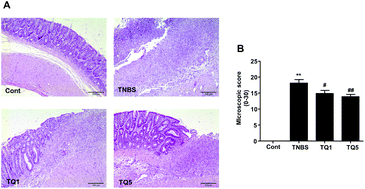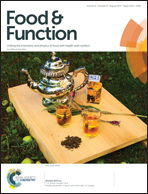Protective vascular effects of quercitrin in acute TNBS-colitis in rats: the role of nitric oxide
Abstract
Quercitrin (quercetin 3-rhamnoside) is a bioflavonoid with anti-inflammatory activity in experimental colitis. Several studies have suggested that vascular injury might be a primary process in Crohn's disease, but there is no information about the function of the mesenteric bed in the experimental models of colitis. The aims of this study were to analyse whether the reactivity to vasoconstrictor agents is altered in the mesenteric vascular bed from animals with colitis induced by administration of trinitrobenzenesulfonic acid (TNBS) in the early stages of this pathology, and to determine the effects of quercitrin on such vascular alterations. Contraction of mesenteric beds produced by vasoconstrictor agents such as noradrenaline and KCl is reduced in rats in the early stages of experimental TNBS-induced colitis. This alteration was partially reverted by non-selective nitric oxide synthase (NOS) inhibition with N-nitro-L-arginine methylester, and enhanced by non-selective cyclooxygenase (COX) inhibition with indomethacin. However, the endothelium-dependent relaxant responses to acetylcholine were not significantly altered. iNOS, COX-2, NOX-1, tumor necrosis factor α (TNFα) and interleukin 1β (IL1β) expressions were higher in the mesenteric arteries from TNBS-treated rats, without changes in both eNOS expression and eNOS-Ser1177 phosphorylation. The in vivo pre-treatment with 5 mg kg−1 of the flavonoid quercitrin reverts both the early hyporesponse of mesenteric arteries to noradrenaline and the up-regulation of iNOS, COX2, NOX1, TNFα and IL1β in colitic rats. In conclusion, quercitrin improves the impaired mesenteric vascular reactivity in the acute phase of this colitis model, at least in part by reducing NO overproduction from iNOS.



 Please wait while we load your content...
Please wait while we load your content...